Hypo Monkey Tail Skink For Sale
$5,999.99
WE HAVE HYPO MONKEY TAIL SKINK FOR SALE. HERE ARE SOME HIGHLIGHTS:
- Corucia zebrata
- Farm Bred
- Approximately 14 – 15 Inches In Length From Head To Tail
- Adults Can Reach Up To Lengths Of 32 Inches In Total
- These Are Voracious Foragers Feeding On Fresh Fruits And Vegetables
FUN FACTS!
- These Skinks Have Prehensile Tails Meaning They Can Grip And Grab Things With Their Tails
- Gorgeous Animals Not Frequently Seen Here At Underground Covered In Rich Green Patterns
- Naturally Occurring Out Of The Solomon Islands
- Females Are Viviparous Meaning That They Bear Live Young
- With Proper Care These Can Live More Than 20 Years In Captivity
Hypo Monkey Tail Skink
The Hypo Monkey Tail Skink, scientifically known as Corucia zebrata, is a fascinating reptile that captivates both herpetologists and reptile enthusiasts alike. Native to the Solomon Islands, this skink stands out due to its distinctive physical and behavioral characteristics. One of its most striking features is its prehensile tail, which resembles that of a monkey, hence its intriguing name. This tail is not just for show; it plays a crucial role in the skink’s arboreal lifestyle, aiding in climbing and providing stability among the trees.
Belonging to the family Scincidae, the Hypo Monkey Tail Skink is unique in its appearance and genetics. The term “hypo” refers to hypomelanism, a condition characterized by a reduction in melanin, giving these skinks a lighter coloration compared to their more common relatives. This lighter hue makes them particularly appealing to reptile collectors and breeders. Their scales are typically a mix of green and brown, with intricate patterns that provide excellent camouflage in their natural habitat, which consists mainly of lowland rainforests and coastal woodlands.
Beyond its physical attributes, the Hypo Monkey Tail Skink is also known for its social behavior, which is relatively rare among skinks. They are often found in small family groups, engaging in complex social interactions. This communal living is thought to provide several advantages, such as increased protection from predators and improved thermoregulation. Such behaviors further enhance their appeal and provide ample opportunities for observation and study.
Overall, the Hypo Monkey Tail Skink is a unique marvel in the reptilian world. Its combination of distinctive physical traits, intriguing social behavior, and specialized habitat make it a subject of ongoing fascination and research. Understanding the basics of this remarkable species provides a foundation for appreciating its role within the broader ecosystem and highlights the diversity within the skink family.
Physical Characteristics and Appearance
The Hypo Monkey Tail Skink is a fascinating reptile, renowned for its distinctive physical traits that set it apart from other skink species. One of the most notable features of this skink is its size. Typically, an adult Hypo Monkey Tail Skink can reach lengths of up to 32 inches, making it one of the larger members of the skink family. Its coloration is another striking characteristic. As its name suggests, the ‘hypo’ or hypomelanistic trait results in a reduced melanin production, giving the skink a lighter, more muted color palette compared to its darker-skinned counterparts. This unique pigmentation can vary from shades of olive and gray to a more vibrant green, often with subtle, contrasting patterns along its body.
A standout feature of the Hypo Monkey Tail Skink is its prehensile tail. This tail is not just a physical attribute but a crucial survival tool. Adapted for climbing, the prehensile tail allows the skink to grasp and navigate through the branches of its arboreal habitat with ease. This capability is particularly advantageous in the dense forests of the Solomon Islands, where these skinks are primarily found. The tail also aids in maintaining balance, enabling the skink to move swiftly and efficiently among the trees, which is essential for escaping predators and hunting for food.
When comparing the Hypo Monkey Tail Skink to other skink species, its unique characteristics become even more apparent. While many skinks have a more terrestrial lifestyle with less specialized tails, the Hypo Monkey Tail Skink’s adaptations highlight its arboreal nature. Its lighter coloration helps it blend into the foliage, providing camouflage from predators. Additionally, the sturdy and flexible limbs equipped with sharp claws further assist in climbing and grasping, enhancing its survival in a vertical environment.
In conclusion, the Hypo Monkey Tail Skink’s unique physical characteristics, from its size and coloration to its prehensile tail, are exemplary adaptations that not only distinguish it from other skinks but also equip it for thriving in its natural habitat.
Natural Habitat and Distribution
The Hypo Monkey Tail Skink, also known scientifically as Corucia zebrata, is predominantly found in the verdant rainforests of the Solomon Islands. These tropical regions provide an ideal habitat, characterized by high humidity, consistent temperatures, and dense foliage. The skink thrives in environments where there is ample vegetation, which offers both a source of food and necessary cover from predators.
Geographically, the Hypo Monkey Tail Skink is native to the Solomon Islands, an archipelago located in the southwestern Pacific Ocean. This region’s climate plays a pivotal role in supporting the species, with average temperatures ranging between 24°C and 30°C and significant rainfall throughout the year. Such conditions create a lush, green environment that is conducive to the skink’s arboreal lifestyle.
Environmental factors significantly influence the habitat preferences of the Hypo Monkey Tail Skink. The abundance of broadleaf trees and shrubs in these rainforests provides essential resources, such as food and nesting sites. The skink primarily feeds on leaves, fruits, and flowers, which are plentiful in these thriving ecosystems. Additionally, the dense canopy offers protection from potential threats and harsh weather conditions.
While the Hypo Monkey Tail Skink is most commonly associated with the rainforests of the Solomon Islands, it can also be found in secondary forests and areas of human habitation, provided there is sufficient vegetation. However, habitat destruction due to logging and agricultural expansion poses a significant threat to their natural environment. Conservation efforts are crucial to preserve these unique reptiles and their habitats, ensuring their continued survival in the wild.
Understanding the natural habitat and distribution of the Hypo Monkey Tail Skink is essential for conservation strategies. By protecting their rainforest homes and mitigating environmental disruptions, we can help maintain the delicate balance that supports the existence of this remarkable species.
Diet and Feeding Habits
The Hypo Monkey Tail Skink exhibits a fascinating dietary profile, predominantly characterized by its herbivorous tendencies. These reptiles primarily consume a variety of plant materials, including leaves, flowers, and fruits, which constitute the bulk of their nutritional intake. Their preference for a plant-based diet aligns with their natural habitats, where vegetation is abundant and provides a rich source of sustenance.
Among their favorite foods, the Hypo Monkey Tail Skink shows a particular affinity for tender leaves and succulent fruits, which offer both hydration and essential nutrients. Their feeding behavior is relatively methodical; they often forage during the cooler parts of the day, such as early morning or late afternoon, to avoid the intense heat. This behavioral adaptation not only aids in temperature regulation but also aligns with the availability of dew-covered foliage, making their meals more palatable and easier to digest.
Interestingly, the Hypo Monkey Tail Skink has developed unique adaptations to optimize its feeding process. Their strong, curved claws are particularly effective for climbing and gripping various plant surfaces, allowing them to access a wider range of vegetation. Additionally, their prehensile tails play a crucial role in maintaining balance and stability while they forage in complex terrains, such as tree branches and rocky outcrops.
While primarily herbivorous, the Hypo Monkey Tail Skink occasionally exhibits omnivorous tendencies, especially in the absence of preferred plant materials. In such instances, they may consume small insects or other invertebrates to supplement their diet, ensuring they meet their nutritional needs. This dietary flexibility highlights their adaptability and resilience in varying environmental conditions.
The feeding habits of the Hypo Monkey Tail Skink are a testament to their evolutionary ingenuity, showcasing a blend of specialized behaviors and physical adaptations that enable them to thrive in their natural ecosystems. Their diet not only sustains them but also plays a significant role in their ecological interactions, contributing to the health and diversity of their habitats.
Behavior and Social Structure
The Hypo Monkey Tail Skink, also known as Corucia zebrata, exhibits a fascinating array of behaviors that sets it apart in the reptilian world. These skinks are primarily diurnal, engaging in most of their activities during daylight hours. Their daily activity cycles include basking in the sun to regulate body temperature, foraging for food, and engaging in social interactions within their group.
Unlike many reptilian species that are solitary, the Hypo Monkey Tail Skink is known for its social nature. These skinks often form small groups or colonies, displaying a level of social complexity uncommon among reptiles. Within these groups, social interactions are frequent and can include grooming, playing, and even communal basking. This social structure provides multiple benefits, such as increased vigilance against predators and enhanced foraging success through cooperative behaviors.
Territoriality is another notable aspect of the Hypo Monkey Tail Skink’s behavior. While they are social, these skinks can be territorial, particularly during the breeding season. Males often establish and defend territories to attract females and secure mating opportunities. Territorial disputes are typically resolved through displays and posturing rather than physical combat, showcasing the species’ preference for minimizing energy expenditure and avoiding injury.
Interactions with other species in their environment are generally passive. The Hypo Monkey Tail Skink is primarily herbivorous, feeding on a diet of fruits, leaves, and flowers, which reduces direct competition with other species for food resources. However, they do exhibit a strong instinct for predator avoidance, employing camouflage and quick retreats into dense foliage when threatened.
One unique behavior specific to this species is their tail prehension. The Hypo Monkey Tail Skink uses its tail not only for balance and locomotion but also as an additional limb to grasp branches and stabilize themselves while navigating their arboreal habitats. This adaptation is particularly advantageous in the dense forest canopies where they reside, allowing them to move with agility and precision.
Overall, the Hypo Monkey Tail Skink’s behavior and social structure are intricate and multifaceted, reflecting their adaptation to a complex and dynamic environment. Their social nature, combined with unique behavioral traits, underscores their role as a remarkable and distinctive member of the reptilian kingdom.
Reproduction and Lifespan
The reproductive cycle of the Hypo Monkey Tail Skink is a fascinating process marked by distinct stages and behaviors. These skinks, like many reptiles, exhibit specific mating rituals that often involve displays of physical prowess and territorial dominance. Mating typically occurs during the warmer months, when environmental conditions are most favorable for the survival of the offspring. The gestation period for the Hypo Monkey Tail Skink lasts approximately six to eight months, a duration that is relatively long compared to other reptiles.
Upon the completion of gestation, the female skink gives birth to live young, which is a notable characteristic within the reptilian world. The typical litter size ranges from one to three offspring, though it is not uncommon for a female to produce twins. The newborn skinks are remarkably well-developed at birth, possessing the ability to cling to branches and exhibit a degree of independence almost immediately.
Parental care in Hypo Monkey Tail Skinks is minimal; however, the maternal bond is evident as the mother often remains in close proximity to her young for the first few days. This period allows the juveniles to acclimate to their surroundings and gain initial survival skills. The early life stages of these young skinks are critical, as they are highly vulnerable to predators and environmental changes. Juveniles typically reach sexual maturity at around two to three years of age, marking the beginning of their own reproductive cycles.
The lifespan of the Hypo Monkey Tail Skink varies significantly between wild and captive environments. In the wild, these skinks face numerous threats, including predation and habitat destruction, which can limit their lifespan to around ten years. Conversely, in captivity, where threats are minimized and care is optimized, they can live up to twenty years or more, provided they receive proper nutrition, environmental enrichment, and medical care. The longevity of these skinks in captivity underscores the importance of attentive and knowledgeable husbandry practices.
Conservation Status and Threats
The Hypo Monkey Tail Skink, a rare and captivating reptile, has garnered attention not only for its unique appearance but also for its conservation status. According to the International Union for Conservation of Nature (IUCN), the Hypo Monkey Tail Skink is currently classified as a species of concern. This designation highlights the growing threats that jeopardize their survival in their natural habitat. As with many other species, the primary challenges they face revolve around habitat loss, climate change, and human activities.
Habitat loss remains one of the most pressing threats to the Hypo Monkey Tail Skink. Deforestation and land conversion for agriculture or urban development have significantly reduced the skink’s natural habitat. These activities fragment the landscape, making it increasingly difficult for the species to find suitable areas for shelter, foraging, and breeding. The destruction of their habitat not only reduces the available living space but also exposes the skinks to predators and other environmental stressors.
Climate change adds another layer of complexity to the conservation of the Hypo Monkey Tail Skink. Alterations in temperature and precipitation patterns can disrupt their ecological balance, affecting food availability and reproductive cycles. Such changes can lead to a decline in population numbers, making it even more critical to monitor and address these impacts.
Human activities, including illegal poaching and the pet trade, further exacerbate the threats faced by the Hypo Monkey Tail Skink. Despite regulations, illicit capture and trade of these skinks continue to pose significant risks. Efforts to curb these activities are essential to prevent further population declines.
Conservation measures are in place to safeguard the Hypo Monkey Tail Skink. Protected areas and reserves have been established to preserve their habitats. Additionally, breeding programs and research initiatives aim to enhance our understanding of their ecology and promote sustainable conservation strategies. Public awareness campaigns also play a crucial role in informing communities and fostering a sense of stewardship towards these remarkable reptiles.
Care and Maintenance in Captivity
Keeping a Hypo Monkey Tail Skink as a pet can be a rewarding experience for reptile enthusiasts, provided they are prepared to meet the specific needs of these unique creatures. The proper care and maintenance of Hypo Monkey Tail Skinks begin with creating an appropriate habitat. A spacious terrarium, ideally measuring at least 36x18x18 inches, is necessary to accommodate their active nature. The enclosure should mimic their natural environment, featuring branches and vines for climbing, as well as hiding spots to provide a sense of security.
Maintaining the correct temperature and humidity levels is crucial for the health of Hypo Monkey Tail Skinks. The ambient temperature should be kept between 75-85°F, with a basking spot reaching up to 95°F. Nighttime temperatures can drop to around 70°F. A humidity level of 60-80% is ideal, and this can be achieved through regular misting and the use of a substrate that retains moisture, such as coconut fiber or sphagnum moss. Installing a hygrometer and thermometer will help in monitoring these conditions accurately.
The diet of Hypo Monkey Tail Skinks should be varied and balanced to ensure their nutritional needs are met. Primarily herbivorous, their diet should consist of leafy greens, vegetables, and fruits. Offer a mix of collard greens, dandelion greens, squash, and berries. Occasional supplementation with calcium and vitamin D3 is recommended to prevent deficiencies. Fresh water should always be available, and the water dish should be cleaned regularly to maintain hygiene.
Regular health check-ups are essential for detecting potential issues early. Common health problems in Hypo Monkey Tail Skinks include metabolic bone disease, respiratory infections, and parasites. Preventive measures such as maintaining proper UVB lighting, ensuring a balanced diet, and keeping the enclosure clean can mitigate these risks. If any signs of illness are observed, such as lethargy, loss of appetite, or abnormal droppings, it is imperative to consult a veterinarian specializing in reptiles.
Caring for Hypo Monkey Tail Skinks requires dedication and attention to detail. Their unique needs can present challenges, but with the right knowledge and commitment, keeping these captivating reptiles can be a fulfilling endeavor. Potential keepers should be prepared for the responsibilities involved in providing a suitable environment and ensuring the well-being of their skink.






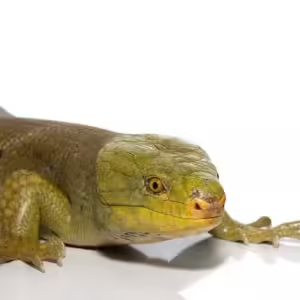

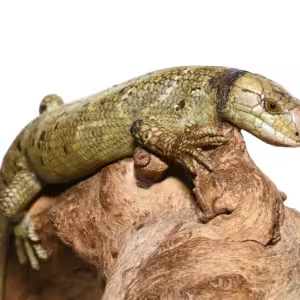



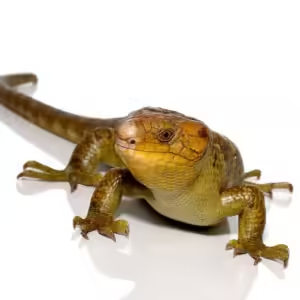


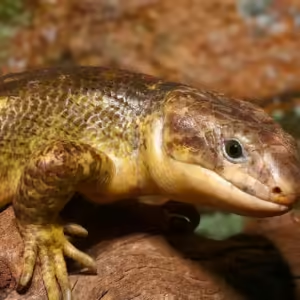

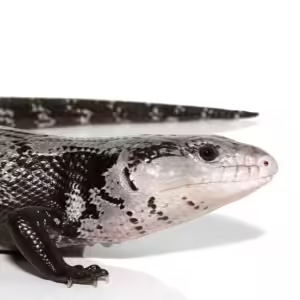
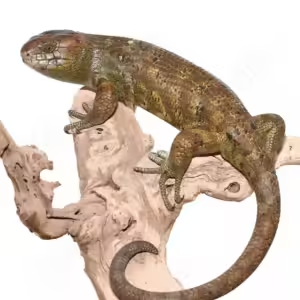


Reviews
There are no reviews yet.